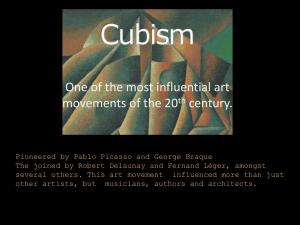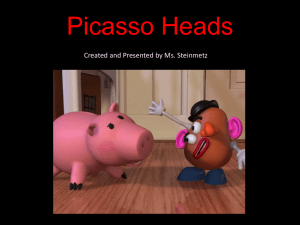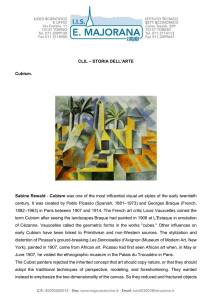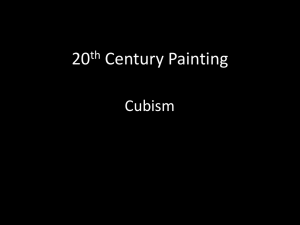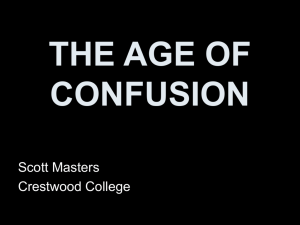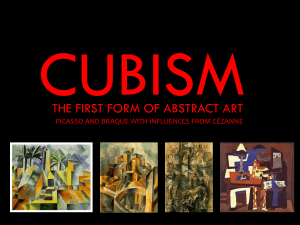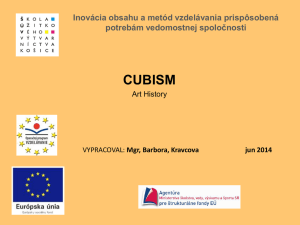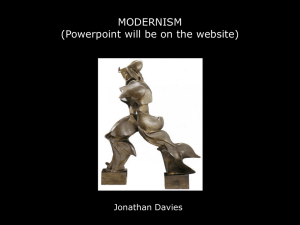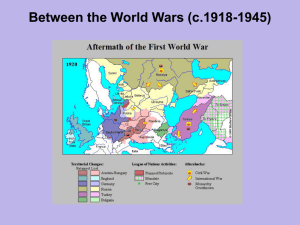Digital Cubism Handout
advertisement
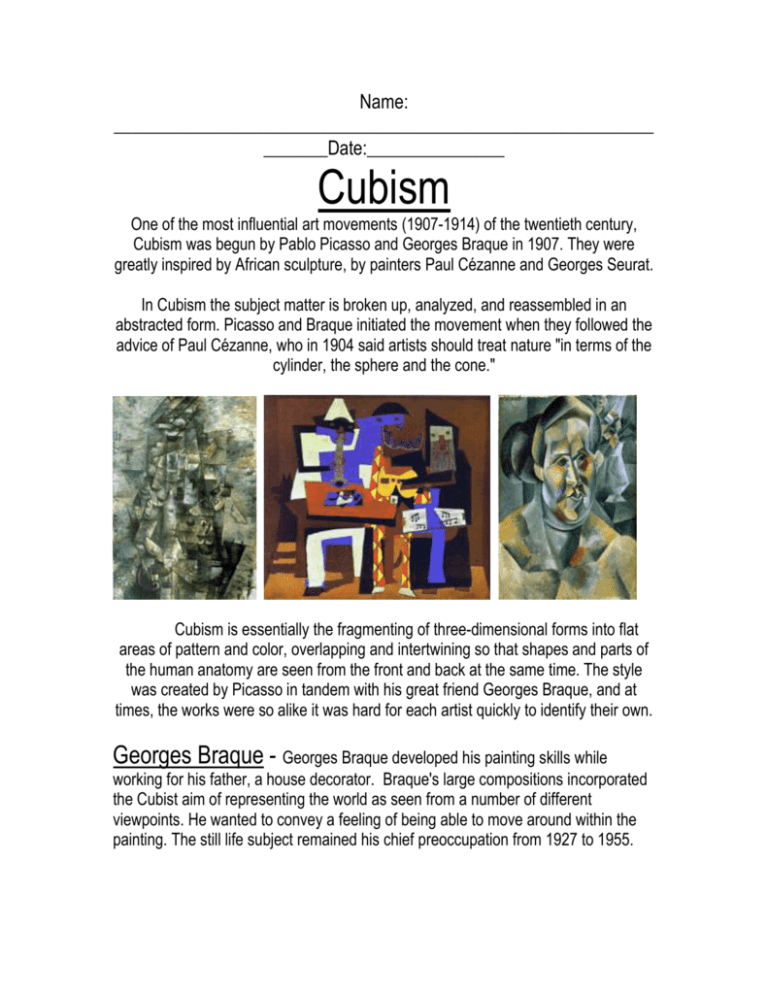
Name: ___________________________________________________________ _______Date:_______________ Cubism One of the most influential art movements (1907-1914) of the twentieth century, Cubism was begun by Pablo Picasso and Georges Braque in 1907. They were greatly inspired by African sculpture, by painters Paul Cézanne and Georges Seurat. In Cubism the subject matter is broken up, analyzed, and reassembled in an abstracted form. Picasso and Braque initiated the movement when they followed the advice of Paul Cézanne, who in 1904 said artists should treat nature "in terms of the cylinder, the sphere and the cone." Cubism is essentially the fragmenting of three-dimensional forms into flat areas of pattern and color, overlapping and intertwining so that shapes and parts of the human anatomy are seen from the front and back at the same time. The style was created by Picasso in tandem with his great friend Georges Braque, and at times, the works were so alike it was hard for each artist quickly to identify their own. Georges Braque - Georges Braque developed his painting skills while working for his father, a house decorator. Braque's large compositions incorporated the Cubist aim of representing the world as seen from a number of different viewpoints. He wanted to convey a feeling of being able to move around within the painting. The still life subject remained his chief preoccupation from 1927 to 1955. Pablo Picasso - A Spanish painter and sculptor. One of the most recognized figures in 20th century art, he is best known as the co-founder, along with Georges Braque, of cubism. It has been estimated that Picasso produced about 13,500 paintings or designs, 100,000 prints or engravings, 34,000 book illustrations and 300 sculptures or ceramics. Then came the awesome Les Demoiselles d'Avignon of 1907, the shaker of the art world (Museum of Modern Art, New York). Picasso was a little afraid of the painting and didn't show it except to a small circle of friends until 1916, long after he had completed his early Cubist pictures. www.artlex.com Les Demoiselles d’Avignon (1907), Pablo Picasso Analytic Cubism - The first phase of Cubism, from about 1907 to 1912. Analytic cubists reduced natural forms to their basic geometric parts and then tried to reconcile these essentially three-dimensional parts with the two-dimensional picture plane. Color was greatly subdued, and paintings were nearly monochromatic. Synthetic Cubism - Developed by Picasso, Braque and others, between 1912 and 1919. It was seen as the first time that collage had been made as a fine art work. Whereas analytic cubism was an analyzation of the subjects (pulling them apart into planes), synthetic is more of a pushing several objects together.
